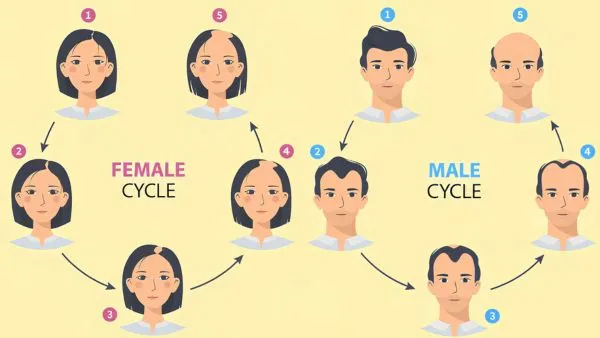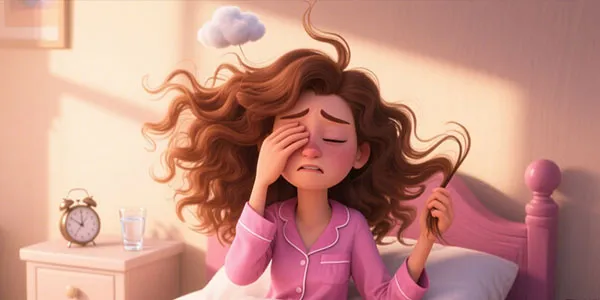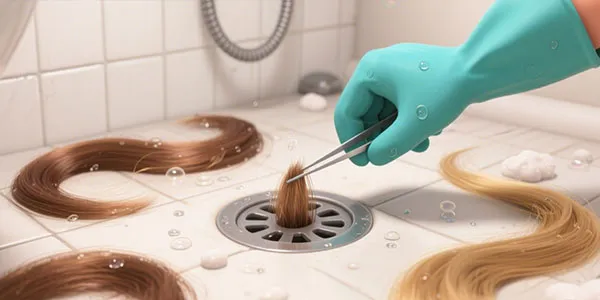
😕How Likely Are You to Go Bald?
Hair loss worries can sneak up on anyone, especially as life gets busier and stress piles on. But don't stress; this fun quiz looks at your daily habits, family stories, and little quirks to give you a playful insight into your hair's future.
1. When you wake up, how messy is your hair?

2. How often do you pull at your hair when stressed?

3. What's your favorite snack?

4. When outside, what's your hair protection style?

5. How much hair do you find in your shower drain?

6. How's your family's hair situation?

Hair is often one of the first things people notice about us and one of the first things we panic about when it starts to thin. Whether you're running your fingers through your scalp wondering if that patch feels lighter than yesterday or just staring suspiciously at the drain after every shower, you're not alone. Hair loss, or androgenetic alopecia, affects millions worldwide, and it's more common and more predictable than you might think.
What Actually Causes Baldness?
The most common form of baldness is hereditary. It's often called male-pattern baldness or female-pattern hair loss, and it's driven primarily by genetics and hormones, especially a hormone called DHT (dihydrotestosterone). DHT shrinks hair follicles over time, shortening the hair growth cycle and eventually stopping new hair from growing.
But genes aren't the only factor. Here are some other factors that can contribute:Emotional or physical stress can also trigger temporary hair loss. A lack of nutrients like iron, vitamin D, or protein can also affect hair health. Thyroid disease, autoimmune disorders (such as alopecia areata), and scalp infections may also play a role. Tight hairstyles and frequent heat styling can damage hair follicles over time.
How Much Does Genetics Really Matter?
If your father or grandfather went bald early in life, your chances of going bald are significantly increased. However, recent research suggests that your mother's hair volume genes are also important. In fact, the gene for male pattern baldness is often passed down through your mother's X chromosome.
While genes play a role, lifestyle also plays a significant role. Early signs of balding include:
A receding hairline, especially an "M" shape, and thinning on the crown of the head; Hair trapped in pillows or brushes; Slow regrowth of hair after shedding; Microtrichosis (shorter, finer hairs replacing thicker hairs);
If you notice these signs, you're not imagining it; it may be time to pay attention.
So... How Likely Are You to Go Bald??
While it's impossible to predict with 100% accuracy without genetic testing, your habits, history, and lifestyle choices paint a pretty clear picture. Whether you're destined for thick locks into your 80s or an early receding hairline, it's all part of your unique blueprint.
Take care of your scalp, understand your risks, and take control of your own look if need be.


